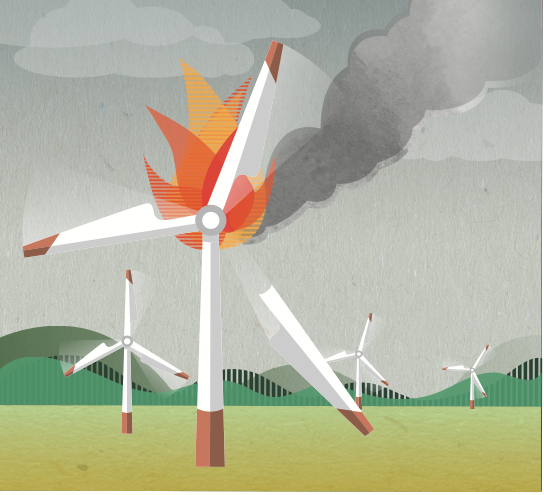I remember as a kid, watching Fred Flintstone smoking cigarettes. My dad smoked, so did most of my family. We were told smoking was fine. Years later, the obvious outcome was that smoking was not fine, and because of it, I lost a few family members in the process.
What does that have to do with Wind? We all grew up in a period of time where physical testing was considered the only way you validated mechanical systems – whether they’re jet engines or wind turbines. For years, it was accepted that physical testing was how you ensure that a design would meet the design criteria. And so, we marched to the same drum as we did in the 1960s.
But there’s a problem. The customers that we sell products to are angry at the field failure rates. In wind, that failure rate can average nearly 6% and manifest itself into high LTSA costs, variable O&M costs, and in the worst scenario, flip their business and make it unprofitable. In short, the products in the market can kill your business.
So, what do cigarettes and physical testing have in common? Simply, physical testing on its own can kill your business.
How do we know this? First, we know that the failure rates are not changing as an average, even as new products come to replace old products. In fact, the cost of LTSAs are rising, or at least being skewed to high cost in later years. Secondly, we see many operators replacing failed parts with the same parts. Our conclusion has been that they don’t have the information to extend the life of their assets with better longer lasting parts. And finally, the cost and amount of time to run multiple bench tests is prohibitive in bringing new more reliable products to market and so we see a continuation of the failure rates – especially on critical failure components like main bearings and pitch systems.
There’s an obvious answer that most aerospace companies already know and that’s to do an extraordinary amount of computational testing, before physical testing. That way, you can test more data points, increase the loading spectrum and get down to the physical tests that matter the most. Additionally, using operating information from our customers, input conditions from the field to our computational testing simulators allows us to get closer to the actual operating conditions that customers experience in the field.
The next step is to choose longer lasting components in both new designs and for assets already deployed in the field. Let’s look at those cases.
There’s a business model that we’ve proven, where replacement of poorly performing components can decrease the field failure rates from 6% to 3%, a 50% drop in field failures. This involves finding the bad bearings and gears and replacing them throughout the fleet early, before significant damage to the drivetrain. The cost of part replacement is justified through the low cost of up-tower component replacements verses the business value upside of life extension and increased energy production for assets that don’t need to be replaced or experience major overhaul.
The trick is how do you find the bad components. For the sake of argument, we’ve done that work already.
For new products and designs, computational testing can drop the failure rate from 6% to 1% by ensuring the right critical components make their way into new products before they go to market. The cost of premature wear in a main bearing on a new design hurts everyone: the OEM, the operator and eventually the consumer. We know there are differences in the quality of metals used in critical components. You would never want to fly in an aircraft that used poor quality metals in its critical components. Why would that be different with a wind asset expected to last 20+ years.
New products must be tested 1000x more than tested today using the operating conditions experienced in the field, creating a much broader loading regime that’s unaffordable today by physical testing only.
I don’t want to leave the impression that physical testing is unimportant or obsolete. Instead, when it’s coupled with computational testing upfront, the combination makes the optimal economic sense.
And, through advances in digitalization it’s possible to buy replacement components at a third of the cost lower than what you’re buying components at today. In automotive, for example, buying groups create economies of scale so that component costs can be as low as possible. In wind, instead of each operator buying alone, the development of buying groups, coupled with replacement forecasts and good terms and conditions can lower component costs by 30%.
There’s good news here: we can find the critical components failing in your wind assets – better and cheaper than ever before. We can reduce the failure rates of your assets by 50% by replacing those components up-tower and before they fail. And we can buy those components at 30% less than what we’re buying them today. So, what’s holding you back?
I remember how many years my parents smoked cigarettes. Even as the data became apparent and the warnings were placed on the cigarette carton, they continued to smoke.
They never thought it would kill them… And you never thought that physical testing by itself would kill your company. How long will it take you to change?
This article was written by Ed Wagner, Chief Marketing Officer
